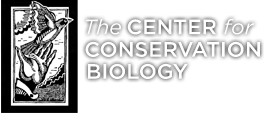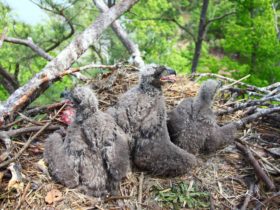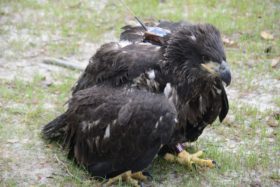Azalea on the Move Again
End of an era: Metompkin peregrine tower removed after 25 years
September 9, 2009United States Nightjar Survey wraps-up third year
September 10, 2009
On Sunday afternoon Sept 6 Azalea (banded HH) left the area west of Blackwells, VA off the Wicomico River in Northumberland County, and flew west across Richmond County crossing the Rappahannock River just north of Tappahannock in Essex County, crossed US Rt 17 near Champlain and into Caroline County to just south of Sparta, VA and north of Butler’s Fork. From there she turned north back into Essex County flying over Loretto, VA on Rt 17, crossing the Rappahannock River again to just north of Leedstown in Westmoreland County by evening and spent the night of Sept 6 just south of Leedstown. On Sept 7 and 8 she explored the area of the Rappahannock in both Westmoreland and Essex Counties and as of the last data point on this map – afternoon Sept 8 – was just east of Layton, VA in Essex County. This is an area that is heavily used by bald eagles and is one of the prime bald eagle concentration areas in Virginia. 16 of the other bald eagles with satellite transmitters have used this area in 2009 according to Libby Mojica, CCB biologist who fitted all the transmitters on the eagles.
Joe Foreman at Norfolk Botanical Garden reports that the male adult bald eagle was in the camera tree this morning (Sept 10).
Click on map to enlarge.




10 Comments
thank you. it is so good to see her apparently flourishing and her explorations
Thank you for prompt updates.It is great to see where Azalea has been in the last few days.
Our little lady is making up for a slow start. I would think that foraging is no longer an issue given all her physical activity. Nice to hear she has reached one of the eagle concentration areas – I imagine she still has lots to learn and being among her own will teach her additional survival techniques. Thanks to you and your team for all the time and effort taken to keep us informed of Azalea’s progress.
glad to hear our little girl is doing well and with other eagle’s. She is making up for a slow start,that’s ok.She is going to be a wonderful eagle one day. Thanks to you and your team for all the time and information you have got out to us all,we love our little girl.
Thanks for your updates on trailing our favorite eagle, Azalea. Our hearts reach beyond NBG with hopes that we will see AZ travel wherever her heart desires. So far she seems to like the Virginia environment but am sure she will travel further north before winter. I keep a daily watch for the new tracking map, as do many others.
Many thanks !!
Thank you so much for your updates on everyone’s little girl Azeala. I also look everyday to see if there is an update on her.
Reese, Can you address why the Wildlife Tracking by CCB for Azalea hasn’t been updated since 9/5? I thought it updated every 3 days. Thanks.
Chris
The wildlife tracking and seaturtle maps have been updated. Thanks for calling it to our attention. – Reese
Reese, thank you for all the updates. I hope Azalea hangs close by during fall & winter months. I will look for her at all my favorite eagle spots.
Thank you Reese for keeping us all up-to-date on her progress as a first year Eagle. I think this project was/is well worth the effort on everyones part and I hope future projects like this are planned. It looks as if she’s in some great Eagle habitat and I hope she is enjoying her life as an Eagle.